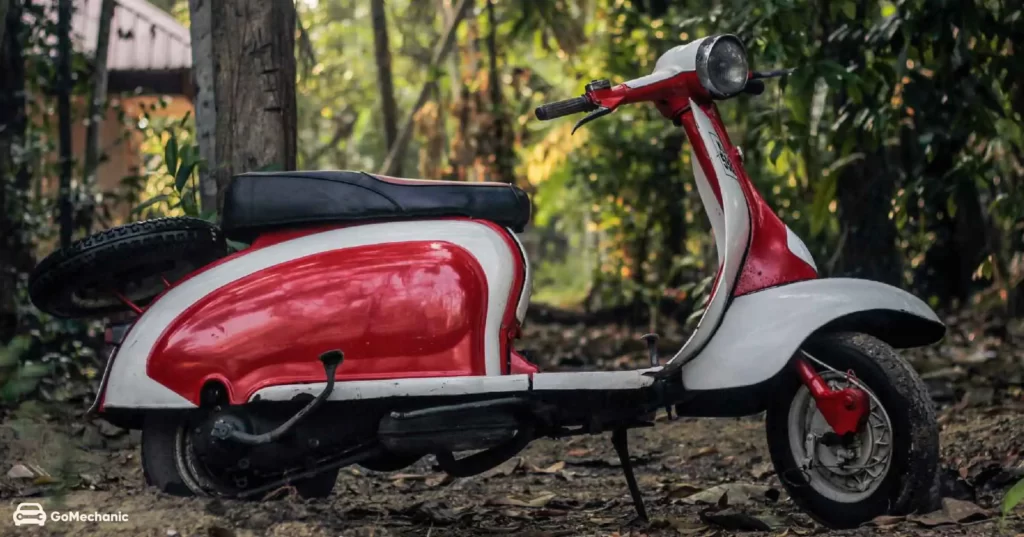Unforgotten Brands – Lambretta Scooters

The Lambretta was a popular brand In Europe and especially in India. But, it could keep pace with times. It is now going through a revival.
Ferdinando Innocenti, a businessman from Pescia, established a steel tubing facility in Rome in 1922. He relocated the company to Milan in 1931 and established a more capacious facility there to manufacture seamless steel tubing. During World War II, the plant was subjected to heavy bombing and was destroyed.

Concept
The United States military first acquired a significant quantity of Cushman olive green scooters from Nebraska, United States, to use as field transport for paratroopers and marines in Italy before World War II. Later, through its employment, American troops were able to avoid being trapped by German defences that focused on destroying roads and bridges in the Dolomites (a region of the Alps) and the Austrian border regions.
Ferdinando Innocenti tasked aeronautical engineer General Corradino D’Ascanio with creating a simple, sturdy, and reasonably priced motor vehicle. (D’Ascanio is credited for developing and building the first modern helicopter by Agusta). It needed to be simple to operate for both male and female drivers, have enough passenger capacity, and not stain the driver’s clothing.
Design
D’Ascanio, who detested motorcycles, made several modifications to his machine. The engine was placed directly into the back wheel, and the bike included a handlebar-based gear shifter. In contrast to the exposed front end of motorbikes, the rider was protected from the elements by a “shield” up front. The design of the pass-through leg section catered to female riders because of the difficulty they had in controlling standard bikes while wearing skirts or dresses. The front fork, modelled like the landing gear of a plane, made changing wheels quick and simple. Because of the internal mesh gearbox, the oil- and grime-attracting motorbike chain is no longer necessary. This framework enabled a suite of features to be put on the chassis, paving the way for the rapid iteration of future models.
Fall Out and Vespa
D’Ascanio, on the other hand, had a falling out with Innocenti because the latter preferred to make his frame out of rolling tubing rather than stamped spars, which allowed him to resurrect his pre-war business. D’Ascanio severed ties with Innocenti and brought his design to Enrico Piaggio, who began mass-producing the spar-framed Vespa in 1946.
Cesare Pallavicino and Pier Luigi Torre, two aeronautical engineers, completed the Lambretta’s final design. Before working on the Lambretta design, Pallavicino was the Technical Director of the Caproni aircraft manufacturer during World War II. Torre worked as an engine designer for Italo Balbo’s Idros, where he developed the engine and arranged for its mass manufacturing at Innocenti’s plant.
In 1947, Innocenti began mass producing the Lambretta, a cheap motor scooter, after converting his wartime manufacturing to civilian uses.
Production
Lambretta 125
The 1947 Lambretta, added a pillion seat to the back of the motorcycle, where a passenger or cargo could be carried. In the beginning, the front “shield” was just a flat sheet of aero metal, but eventually, it evolved into a dual skin so that there might be more storage space in front of it, like a car’s glove box. The movable seat served to conceal the gas cap, negating the need for a separate lock or any metalwork on the sleek body.
Production of Innocenti’s Lambretta scooters began a year after Piaggio’s Vespa models first went into production. In Argentina, Brazil, Chile, Colombia, India, the USA, and Spain, Lambrettas were produced under licence, sometimes under other names, but always to a recognisable design.
In France, Henri Willame, the French importer of Lambretta, also launched a business selling a variety of foreign microcars under the generic “Willam” brand. These models were widely available in France through the network of Lambretta dealers and powered by Lambretta motors.
The BLMC Innocenti Closure
Sales of Lambrettas and the health of its parent company, Innocenti, declined in the late 1960s as the middle class expanded throughout Western Europe and the tiny cars became more accessible to more people. British Leyland Motor Corporation tapped Innocenti to create automobiles like the Innocenti Mini under licence from BLMC because of Innocenti’s manufacturing and technical skills and the company’s financial woes.
After some time, BLMC purchased Innocenti. Because of their lack of vision, BLMC had to jump on a fad that was quickly dying out. Strikes lasted for a long time at the BLMC factory; scooter sales plummeted; and Innocenti went out of business in 1972. Light Japanese motorbikes displaced scooters in several of Lambretta’s export markets, including India and Indonesia.
The Lambretta Consortium has reintroduced the “Lambretta V-Special” model as of this year (2017).
India

Similar to why Ferdinando Innocenti first founded the facility, the Indian government purchased it after World War II. There was a need for personal transportation, but India’s underdeveloped infrastructure and economy meant that few people could afford automobiles.
After India gained its independence in the 1950s, Automobile Products of India (API) started constructing Lambretta scooters, starting with the 48 cc, Ld model, Li 1st series. Eventually, they were able to get a licence to manufacture the Li150 Series 2 model, which they first marketed and sold under the Lambretta brand name up until about 1976. They also produced and marketed Lambretta TV 175 series motorcycles for a while, albeit under “Mac 175”. In 1972, Scooter India Ltd. purchased the whole of the Innocenti Unit. The [API-175] three-wheeler, which was modelled on Innocenti’s Lambro, was also an API trademark. API kept making vehicles based on the Lambretta throughout the 1990s, but they haven’t been in business since 1993.
Scooters India Ltd. (SIL), acquired the Lambretta company and all of its assets in 1972. To get an Indian plant up and running, they hired several ex-Innocenti workers to help translate the Italian manuals and equipment instructions. The Vijay Delux/DL, marketed as the Lambretta GP150 in foreign countries, was the first scooter ever manufactured. The Vijay Super was an improved version of this. In the last years of manufacturing, a modern Japanese CDI unit and upgraded front suspension were added for even more refinement. SIL also dispersed whole knock-downs, which were marketed as the Allwyn Pusphak, Falcon, and Kesari after being put together at various locations around India. These were of poorer quality than the SIL-made ones and occasionally had significant aesthetic alterations.
In 1980–1981, around 35,000 SIL scooters were produced, marking a new high point in the company’s history. Production halted in 1997, although by 1987 there were only around 4,500 devices produced. The Vikram three-wheeler, which uses a Lambretta engine, became the focus of SIL’s manufacturing in 2017.
After SIL (Scooters India Limited) stopped using the Lambretta brand name in 2010, The Lambretta Consortium sued them to get it back.
Revival
Walter Scheffrahn, a Dutch investor and Lambretta aficionado, is primarily responsible for the revival of the brand.
Following the meteoric rise in popularity of two-wheeled vehicles, notably scooters, in India, Innocenti SA owner Scheffrahn has set his eyes on the country’s market.
Reference
https://en.wikipedia.org/wiki/Ferdinando_Innocenti


